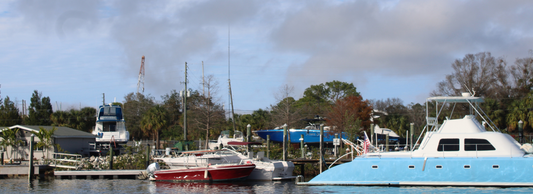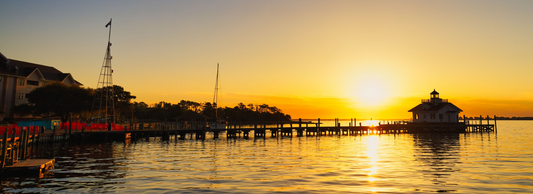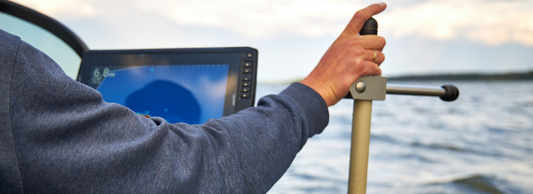Getting the Most Out of Your Waypoints: Why Clusters Matter for Offshore Fishing Success
When you’re staring at a GPS loaded with fishing numbers, it’s easy to get tunnel vision and head straight for that one “hot” spot. But here’s a secret that experienced captains and sharp anglers know: if you see multiple numbers grouped close together, you’re looking at a goldmine. Clusters of waypoints almost always mean there’s a good bottom area—and if you take your time to work that area, you’ll likely discover even more productive spots nearby.
Let’s dive into why clusters are so important, how to approach them, and how you can make the most of every trip by fishing smart.
What Is a “Cluster” of Waypoints?
A cluster is simply a group of waypoints packed into a relatively small area. Unlike a single mark, clusters tell you something important: there’s a lot of good structure in that zone. Maybe it’s a patch of coral, a field of rocks, or a handful of small wrecks and ledges. Over years on the water, captains like Gilbert Mathis—whose legacy lives on through Fishin Not Lookin—would log every productive spot they found, and the best areas always ended up with several numbers close together.
Why Clusters Mean Good Bottom
Here’s the heart of it: if there are multiple numbers in an area, it’s not by accident. It’s because that zone has the kind of bottom structure that consistently produces fish—coral heads, rock piles, ledges, small wrecks, and artificial reefs. These areas provide food, shelter, and hunting grounds for a variety of species.
Clusters are like a big neon sign: “Fish live here!” When you see a bunch of waypoints in one spot, it means those who came before you found reason after reason to mark that area. And here’s the kicker—if you slow down and methodically work the area, you’ll often find even more productive spots in the same vicinity. The ocean is full of subtle changes that don’t always show up on charts, but with a careful approach, you can keep adding to your own collection of “good numbers.”
The Evolving Nature of the Ocean Floor
The ocean is always changing. Coral can sand over, rocks can shift, and artificial reefs can move or break apart after a storm. That’s why it’s smart to think in terms of areas, not just single spots. If one number in a cluster isn’t producing, there’s a good chance another nearby will be holding fish. By working the whole cluster, you give yourself the best odds—today and in the future.
How to Fish a Cluster Like a Pro
So, you’ve found a cluster—what next? Here’s how to make the most of it:
-
Work the Area:
Don’t just fish one number and move on. Spend time working through the entire cluster. -
Use Your Electronics:
Scan between numbers with your sonar or fishfinder. You’ll often spot structure or bait in between marked points. -
Change Up Your Drifts:
Try different drift angles and depths to cover more ground and find where the fish are holding. -
Add Your Own Marks:
If you find a new productive spot in the area, save it! Clusters grow over time, and your future self will thank you.
Remember: clusters are living maps. The more you explore and update them, the more productive they become.
Real-World Example: Captain Mathis’s Legacy
Captain Gilbert Mathis spent more than 25 years running boats up and down the South Atlantic, meticulously logging every trip and every catch. His notes didn’t just list one or two numbers—they mapped out entire areas, with clusters of waypoints that revealed the true “fishy” zones. That’s the legacy you tap into with Fishin Not Lookin’s waypoint packages: decades of real-world experience, organized for your success.

Maximizing Your Investment in Waypoints
Every package from Fishin Not Lookin is more than just a list—it’s a map of proven clusters, each with its own story. Don’t limit yourself to chasing single “honey holes.” Work those clusters, keep notes on your own results, and update your GPS as you discover even more productive spots. The best fishermen are the ones who put in the time to really learn an area—and clusters make that process a whole lot easier.
Conclusion
Clusters of waypoints are your best friend for consistent offshore fishing. They’re a clear sign of a good bottom area, and if you take your time to work the whole zone, you’ll uncover even more hidden gems. Next time you’re planning a trip, don’t just pick a single number—look for clusters, and fish them thoroughly. You’ll catch more, learn more, and get the absolute most out of your waypoints.
Have your own tips or stories about fishing clusters? Drop a comment below or reach out—we love hearing from fellow anglers. And if you’re ready to fish smarter, check out Fishin Not Lookin’s waypoint packages, built from Captain Mathis’s legendary logs.
Tight lines,
~ Mike




